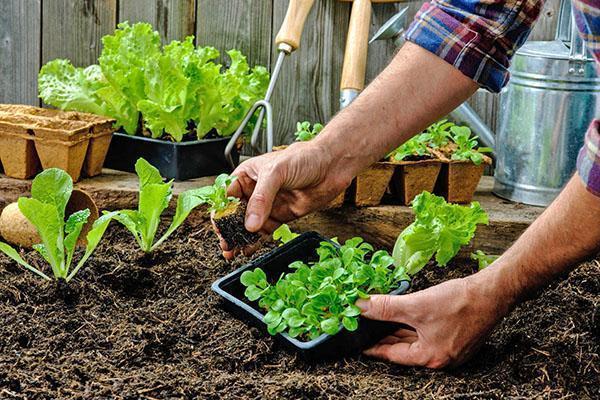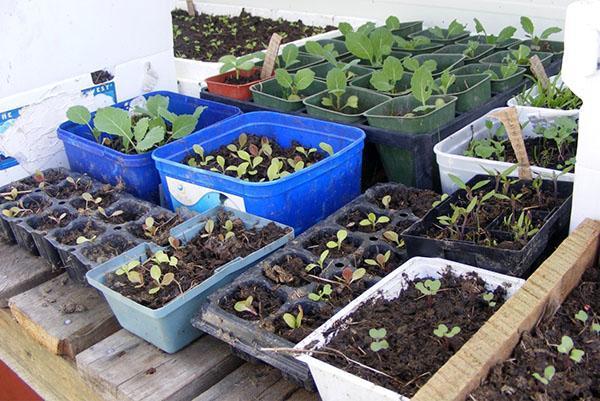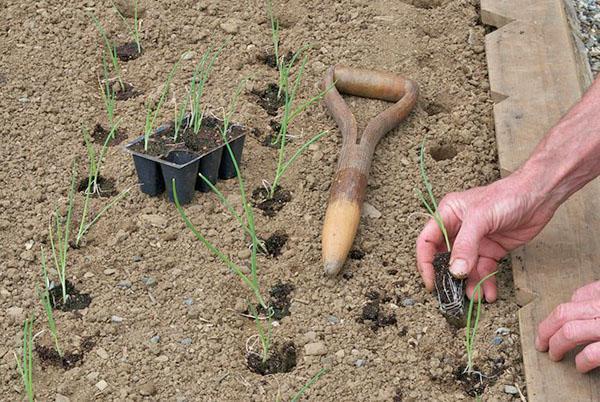Summer resident's calendar: seasonal work in the garden in May
 May is not only the most beautiful spring month, pleasing with bright greenery, the first flowering and harvest of early greenery, but also the most difficult time for a summer resident. In May, every day feeds the year, that is, the future harvest and its safety will depend on the efforts made at this time. And you have to do a lot!
May is not only the most beautiful spring month, pleasing with bright greenery, the first flowering and harvest of early greenery, but also the most difficult time for a summer resident. In May, every day feeds the year, that is, the future harvest and its safety will depend on the efforts made at this time. And you have to do a lot!
What needs to be done in the garden in May?

Every day more and more time summer residents spend in the garden, where:
- the need for watering increases;
- it's time to start loosening the soil and mulching under crops;
- crops sown in autumn or April emerge and require thinning.
They say: "In April, water, in May - grass!" Every Russian gardener tests this sign in practice, noting how, ahead of the growth of cultivated plantings, wheatgrass and bluegrass, woodlice and shepherd's purse, rape and dozens of other weeds appear from the ground.
Weeding in May becomes one of the most important, time consuming, but rewarding types of work in the garden.
The aeration of the soil and the amount of available nutrients, that is, the growth of crops, as well as the survival rate of seedlings planted in the beds, depend on how quickly and efficiently the weeds are removed.
 Pests appear on the site as quickly as weeds. With the arrival of heat, aphids, ants wake up, whites and cabbage fleas, onion flies and other insects annoying gardeners. Fighting them in May will greatly ease summer days and be the first investment in a bountiful harvest in the future.
Pests appear on the site as quickly as weeds. With the arrival of heat, aphids, ants wake up, whites and cabbage fleas, onion flies and other insects annoying gardeners. Fighting them in May will greatly ease summer days and be the first investment in a bountiful harvest in the future.
May weather does not give boredom. It is unstable in spring, therefore, it scorches almost with July heat, then makes the summer resident worry about the March frosts. Both are unpleasant for delicate greenery:
- On hot sunny days, the soil loses its stored moisture, the plants look exhausted, their rooting slows down.
- Frosts in May are dangerous not only for flowering gardens, but also for garden beds. Beans are sensitive to low temperatures and beans, tomatoes and melons, beets and part of green crops.
So that the precious time in May is not wasted, and the invested labor costs do not sink into oblivion, you need to leave the work plan in advance and closely monitor not only the well-being of green pets in the summer cottage, but also the forecasts of weather forecasters for a month.
May signs
 In addition, time-tested signs can be useful to summer residents preparing for sowing and planting:
In addition, time-tested signs can be useful to summer residents preparing for sowing and planting:
- The appearance of white brushes on bird cherry not only threatens a short-term cold snap, but the best time for planting potatoes.
- The first corollas of daffodils in the flower beds are calling summer residents to plant Savoy cabbage.
- Mass flowering of tulips and daffodils is a signal to transfer early white cabbage and cauliflower seedlings to the ground. At the same time peas, radishes, radishes and turnips are sown.
- The color on the cherry signals the beginning of sowing of asparagus and grain beans, beans.

- By the end of May, peonies and lilacs bloom. According to folk signs, flowering says that the time has come for lettuce, Chinese cabbage, pumpkins and zucchini.
- Rowan leaves open before the rest of the trees, but the appearance of color on it is a sure sign that it is time to prepare seeds of early cucumbers for planting.
Sowing marathon in may in summer cottages
 In May, every day is dear. In the first week of the month, it is necessary to complete the sowing of all types of onions, otherwise the risk of being hit by an onion fly increases significantly. Traditionally, the first days of May for the gardener are the time for planting potatoes, which have already been prepared, warmed up and gave strong shoots, ready to quickly take root and grow when they hit the ground.
In May, every day is dear. In the first week of the month, it is necessary to complete the sowing of all types of onions, otherwise the risk of being hit by an onion fly increases significantly. Traditionally, the first days of May for the gardener are the time for planting potatoes, which have already been prepared, warmed up and gave strong shoots, ready to quickly take root and grow when they hit the ground.
If the weather does not allow in April, the first decade of May is suitable for sowing beets, for which rotted manure or humus is abundantly added to the beds.
 It is good when the summer resident has at his disposal a sufficient number of film greenhouses or shelters made of non-woven material. In this case, 7-14 days earlier than the climatic norm, you can sow beans, cowpea and vegetable beans, as well as zucchini, squash and pumpkins on seedlings, and in more southern regions, melons and watermelons... In greenhouse conditions, the plants will not only be protected from the sun and night cold, but will also be able to gently acclimatize.
It is good when the summer resident has at his disposal a sufficient number of film greenhouses or shelters made of non-woven material. In this case, 7-14 days earlier than the climatic norm, you can sow beans, cowpea and vegetable beans, as well as zucchini, squash and pumpkins on seedlings, and in more southern regions, melons and watermelons... In greenhouse conditions, the plants will not only be protected from the sun and night cold, but will also be able to gently acclimatize.
For sowing, it is better to take peat pots of a suitable size, so that after transfer to the ground, the seedlings will painlessly take root.
Seedlings of cucumbers, pumpkins, zucchini and other melons and gourds are transplanted into the ground at the end of the month, if necessary using a shelter to protect from cold wind, precipitation and uninvited feathered guests.
 By the end of the month, the intensity of work does not decrease. Over the last decade, the summer resident will have to sow corn, basil, carry out seedlings of physalis and tomatoes, eggplants and peppers to the beds or under temporary greenhouses. Recent crops are especially thermophilic, therefore, in the slightest doubt, it is better to leave them in a greenhouse or under a greenhouse.
By the end of the month, the intensity of work does not decrease. Over the last decade, the summer resident will have to sow corn, basil, carry out seedlings of physalis and tomatoes, eggplants and peppers to the beds or under temporary greenhouses. Recent crops are especially thermophilic, therefore, in the slightest doubt, it is better to leave them in a greenhouse or under a greenhouse.
Crop care in May
 Seeds trapped in the ground require no less attention than already mature plants or seedlings.
Seeds trapped in the ground require no less attention than already mature plants or seedlings.
Irrigation and rainfall compact the soil, which over time forms a dense crust. It will be difficult for young plants to break through it. It also inhibits the penetration of water and oxygen into the depths.
Therefore, after rain or watering, the beds with crops, as well as planted vegetables, are carefully loosened. To break the crust and prevent the formation of a new one, a passage to a depth of 1–3 cm is enough. It is important not to disturb the rooting seedlings and not harm the delicate sprouts of carrots, beets and other plants. In the future, the green beds can be thinned out and sprinkled with a layer of mulch.
The more beds in the garden are occupied with herbs, vegetables and herbs, the more time the summer resident spends on watering. Knowledge of the preferences of certain cultures will help to save energy and precious minutes.
Cabbage, potatoes, winter garlic, which have already fully developed the aboveground part, most of the root crops and greenery are unpretentious and can be watered using sprinkler irrigation. The main thing that watering did not occur at midday, when moisture on young foliage can cause sunburn.
Cucumbers are sissies. They are afraid of drafts, it is better to water them every other day, with warm water in the morning or evening. On hot days in a greenhouse, plants are uncomfortable, so they can be carefully ventilated.
 Tomatoes are excellent at forming aerial roots, which help plants receive moisture and nutrition. At the same time, the plants are more hardy, so they can be watered 1 - 2 times a week, but abundantly, so that the root system is completely in moist soil. It is useful to huddle bushes, and keep the earth around in a loosened state. Peppers and eggplants are watered 2 times a week. But they do not huddle, but to protect the moisture, they mulch a little.
Tomatoes are excellent at forming aerial roots, which help plants receive moisture and nutrition. At the same time, the plants are more hardy, so they can be watered 1 - 2 times a week, but abundantly, so that the root system is completely in moist soil. It is useful to huddle bushes, and keep the earth around in a loosened state. Peppers and eggplants are watered 2 times a week. But they do not huddle, but to protect the moisture, they mulch a little.
One of the most popular early vegetables - radishes are very fond of water, so it is watered daily, at least every other day. Do the same with daikon and summer radish varieties.